Talent Player

How does the globalization of sports impact player recruitment and talent development ?
The globalization of sports has led to increased competition in player recruitment, diversification of talent pools, and the adoption of advanced training methods. This includes exposure to international markets, cultural exchange, geographic broadening, demographic variety, technological integration, scientific approaches, language and communication adaptation, and education and life skills development.

What are the limitations of using AI for talent scouting and player evaluation ?
The limitations of using AI for talent scouting and player evaluation include the inability to account for intangibles such as emotional intelligence and team chemistry, reliance on potentially biased historical data, lack of human intuition in pattern recognition and contextual understanding, ethical concerns regarding privacy and fairness, cost and accessibility barriers, and legal and regulatory challenges related to data protection laws and intellectual property rights.

Can rigorous training compensate for natural talent in achieving high-level sports performance ?
In sports, the debate between natural talent and hard work continues. While some argue that raw talent is key to success, others believe rigorous training can overcome any lack of innate ability. The reality is that both factors play a significant role in achieving high-level sports performance. Natural talent often manifests itself in physical attributes such as strength, speed, agility, and endurance, giving athletes an advantage in certain sports. Mental acuity also plays a crucial role in athletic performance, with quick reflexes, strategic thinking, and calmness under pressure being important traits. However, rigorous training cannot be overlooked when it comes to achieving high-level sports performance. Through consistent practice and dedication, athletes can develop and refine their skills, making up for any deficiencies in natural talent. Rigorous training also improves an athlete's physical conditioning and mental toughness, essential for overcoming challenges and setbacks throughout their career. To maximize potential, coaches and trainers should adopt personalized approaches based on each athlete's unique strengths and weaknesses. This might involve focusing more heavily on skill development for those with less natural talent or emphasizing mental toughness training for athletes who already possess impressive physical attributes. By tailoring training programs to individual needs, athletes can make the most of their natural talents while simultaneously addressing areas where they may be lacking. Achieving high-level sports performance requires a commitment to continuous improvement. Whether an athlete relies more heavily on natural talent or rigorous training, there is always room for growth and development. By embracing this mindset and striving for excellence in all aspects of their game, athletes can push themselves to reach new heights and achieve success beyond what they may have initially thought possible.

What role does sports economics play in determining player salaries and contracts ?
Sports economics plays a crucial role in determining player salaries and contracts by considering various factors such as market demand and supply, revenue generation, cost of production, risk management, competitive balance, and free agency. Teams must make informed decisions about player compensation while balancing financial considerations with the goal of achieving success both on and off the field.

How do ESG considerations influence talent acquisition and retention ?
The text discusses how Environmental, Social, and Governance (ESG) considerations influence talent acquisition and retention. It states that companies are recognizing the value of incorporating ESG factors into their strategies to attract and retain top talent. The key points include attracting talent through ESG initiatives, retaining talent by aligning with personal values, benefits such as improved reputation and cost savings, challenges in balancing ESG with other priorities, and best practices for implementation. The conclusion emphasizes the importance of prioritizing ESG considerations while ensuring transparency and accountability in all aspects of ESG reporting.

How much money do top football players earn per week ?
Top football players can earn a significant amount of money per week, with factors such as performance, club affiliation, market value, sponsorship deals, and image rights affecting their earnings. Some of the highest-paid players, like Lionel Messi and Cristiano Ronaldo, can earn millions per week when taking into account their salary, bonuses, and endorsements. However, it's important to note that these earnings are the result of immense talent, hard work, and dedication to the sport.

How do smart courts and fields improve player experience and performance ?
Smart courts and fields, equipped with advanced technologies such as sensors, artificial intelligence, and data analytics, have revolutionized the way athletes train and compete. These innovative environments not only enhance the player experience but also contribute significantly to their performance improvement. Here's a detailed breakdown of how smart courts and fields achieve this: ## Enhancing Player Experience ### Real-Time Feedback - **Instant Analysis**: Players receive immediate feedback on their techniques and strategies through sensors and AI, allowing them to make adjustments during practice or competition. - **Visualization Tools**: Augmented reality and virtual reality provide immersive training experiences, helping players better understand game scenarios and improve decision-making skills. ### Personalized Training Programs - **Data-Driven Approach**: Smart systems collect data on individual performances, enabling coaches to create tailored training programs for each player. - **Adaptive Learning**: As players progress, smart technologies adapt the difficulty level of training exercises to match their evolving skills. ### Increased Engagement - **Gamification**: Integrating game elements into training sessions boosts motivation and enjoyment, making workouts more engaging and fun. - **Social Interaction**: Online platforms connected to smart courts enable players to interact with peers, share achievements, and engage in friendly competitions remotely. ## Improving Performance ### Objective Assessment - **Accurate Metrics**: Advanced tracking systems provide precise measurements of speed, power, agility, and other key performance indicators. - **Error Detection**: Machine learning algorithms can identify subtle errors in technique that human eyes might miss, leading to more effective corrections. ### Injury Prevention - **Biomechanical Analysis**: Smart technologies monitor players' movements to detect patterns that could lead to injuries, allowing preventative measures to be taken. - **Load Management**: By analyzing workload data, smart systems help coaches make informed decisions about rest periods and training intensity to avoid overtraining. ### Strategic Insights - **Opponent Analysis**: Data collected from opponents' performances can reveal tendencies and weaknesses, aiding in strategic planning. - **Trend Forecasting**: Analytics tools predict future trends based on historical data, giving teams an edge in adjusting tactics and training regimens. ### Recovery Optimization - **Post-Workout Recovery**: Smart devices track recovery metrics like heart rate variability, suggesting optimal recovery times and methods. - **Nutritional Guidance**: Based on performance data, smart systems offer personalized nutritional advice to aid recovery and improve overall health.

What impact does GPS tracking and other monitoring systems have on team strategy and player safety ?
GPS tracking and other monitoring systems have a significant impact on team strategy and player safety. They provide coaches with real-time data on players' movements, speed, and distance covered during training and games, allowing for enhanced performance analysis, optimized training regimens, and improved game planning. Additionally, these systems help reduce injury risk by monitoring physical activity levels and providing feedback on potential overexertion, enhancing recovery processes through post-game analysis, and improving emergency response in the event of an injury. Overall, GPS tracking and other monitoring systems are essential tools for optimizing team performance and ensuring player safety in sports.

What strategies can sports organizations employ to maximize revenue generation while maintaining fair competition within their respective leagues ?
Strategies for maximizing revenue generation in sports organizations include securing sponsorship and partnership deals, implementing dynamic ticket pricing models and fan loyalty programs, and managing player salaries and benefits effectively. These strategies aim to promote fair competition within leagues while generating additional revenue streams through corporate sponsorships, local business partnerships, media rights agreements, technology collaborations, merchandise partnerships, demand-based pricing, early bird discounts, package deals, rewards programs, membership clubs, community outreach programs, performance bonuses, contract incentives, health insurance and retirement plans, youth academy programs, college partnerships, and player loan programs.

What are the key factors that influence the economic success of a sports team or league ?
The economic success of a sports team or league is influenced by various factors, including fan base and attendance, broadcasting rights and media coverage, sponsorship and partnerships, player performance and talent management, marketing and branding, financial management, governance and leadership, and legal and regulatory framework. A loyal fan base ensures consistent ticket sales and merchandise purchases, while higher attendance rates lead to increased revenue from ticket sales. Lucrative broadcasting contracts and positive media coverage attract fans and sponsors alike. Corporate sponsors provide financial support, while strategic alliances with other brands expand marketing reach. Top players attract fans and improve team performance, while effective draft strategies ensure a steady stream of talented athletes. A strong brand resonates with fans and attracts commercial interest, while creative marketing campaigns generate buzz and drive sales. Efficient spending on operations and player salaries is crucial for financial success, as is diversifying revenue streams. Strong leadership sets the course for long-term success, while transparent governance fosters trust among stakeholders. Adhering to laws and regulations avoids financial penalties and reputational damage, while fair labor agreements ensure stability. Overall, these factors work together harmoniously to create a sustainable and thriving sports organization.

What are some examples of cutting-edge technologies used in professional sports ?
Cutting-edge technologies have revolutionized professional sports, improving athlete performance, fan engagement, and operational efficiency. Wearable technology tracks health metrics, while VR/AR enhances training and fan experiences. Biometric data analysis optimizes physical condition, video analytics deepens game insights, AI transforms coaching, scouting, and fan interaction, and IoT devices improve facility management. These advancements promise continued innovation in the future of professional sports.

How can companies support the development of female leadership talent ?
Companies can support the development of female leadership talent by implementing a variety of strategies and programs that address the unique challenges faced by women in the workplace. Here are some key ways to foster female leadership: 1. Create a diverse and inclusive culture 2. Provide mentoring and sponsorship opportunities 3. Offer professional development programs 4. Foster a collaborative work environment 5. Set clear goals and measure success
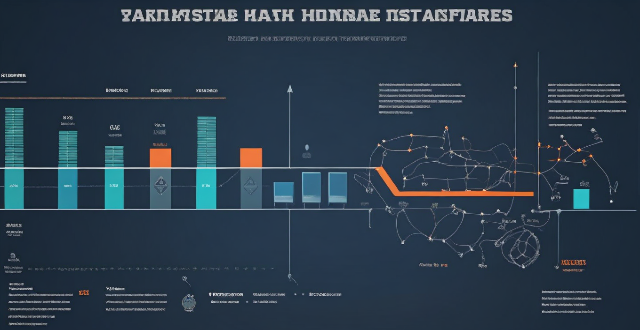
What is sports data analysis and how is it used in modern sports ?
Sports data analysis is the process of collecting, processing, and interpreting sports performance data. The goal is to improve athletic performance through evidence-based decision-making. Key components include data collection, processing, statistical analysis, visualization, and interpretation. Sports data analysis is used in modern sports for performance evaluation, game strategy development, training and preparation, injury prevention and rehabilitation, talent identification and development, fan engagement and media, and business decisions.
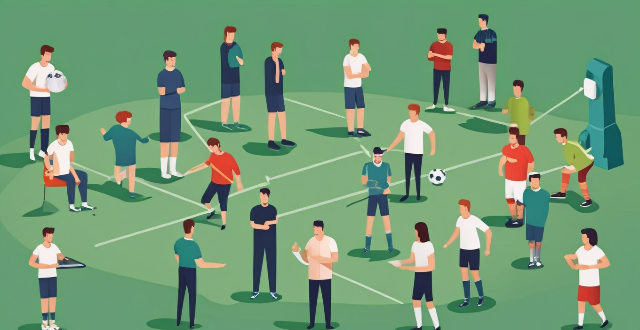
What is the role of a football manager ?
Football managers play a crucial role in the success of a football team, with responsibilities including tactical planning, team management, training, transfer market activities, media interactions, team morale, and budget management. They are responsible for analyzing opponents, devising strategies, selecting players, making substitutions, overseeing training sessions, developing young talent, identifying potential signings, negotiating contracts, representing the team in press conferences, providing post-match analysis, motivating players, resolving conflicts, and managing finances. Their decisions and leadership style greatly influence the direction and success of a football club.
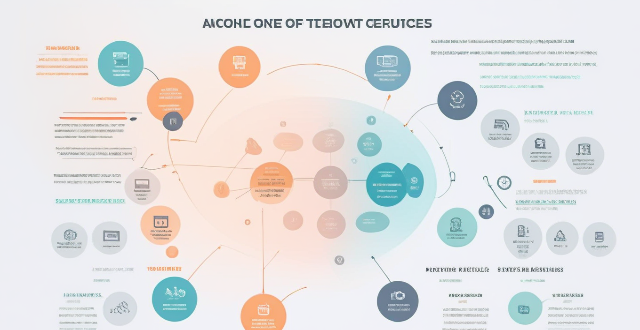
What role does data analytics play in modern sports coaching ?
Data analytics has become an integral part of modern sports coaching, helping coaches make informed decisions about training, game strategy, injury prevention, and recruitment. By analyzing player performance during training and games, coaches can identify areas where players need improvement and create personalized training programs to address those weaknesses. Data analytics also plays a crucial role in developing game strategies by analyzing opponents' strengths and weaknesses, identifying patterns in their gameplay, and developing effective counter-strategies. Additionally, data analytics can help prevent injuries by monitoring player workload and fatigue levels, ensuring that players are not overexerting themselves and adjusting training accordingly. Finally, data analytics is essential for recruitment and talent identification, allowing coaches to evaluate potential recruits' performance and compare them to existing players within the team.

How do inclusive policies benefit society as a whole ?
Inclusive policies are designed to promote equality, fairness, and social cohesion by eliminating barriers and discrimination. These policies benefit society as a whole by ensuring equal access to resources, services, and opportunities for all individuals regardless of their background, abilities, or circumstances. In addition to promoting equality and fairness, inclusive policies also enhance social cohesion by fostering a sense of belonging and mutual respect among different groups within society. This leads to reduced discrimination, increased tolerance, and strengthened community bonds. Inclusive policies also have positive economic outcomes by expanding the talent pool, reducing poverty, and stimulating consumer spending. Furthermore, these policies foster innovation and creativity by providing diverse perspectives, encouraging risk-taking, and promoting collaboration. Finally, inclusive policies can enhance a country's global competitiveness by attracting talent, improving international relations, and driving economic growth.

How does a company's commitment to climate-related CSR influence its ability to attract and retain top talent ?
The influence of climate-related CSR on talent attraction and retention is significant. Companies committed to environmental sustainability can attract environmentally conscious candidates, enhance their brand image, create an innovative work environment, provide fulfilling career opportunities, foster a positive work culture, and offer competitive compensation and benefits. This commitment helps retain high-performing employees who feel fulfilled by their work and share the company's vision for a better future.

Can women play professional football ?
**Can Women Play Professional Football?** The topic discusses the possibility and reality of women playing professional football. It starts with a historical perspective, highlighting the early days when women were not allowed to participate in football due to societal norms and gender roles. However, the first recorded women's football match took place in 1895, despite opposition from male-dominated football associations. The development of women's football is also discussed, with the establishment of the Women's World Cup in 1991 marking a significant milestone for the sport. Professional leagues such as the National Women's Soccer League (NWSL) in the United States have provided opportunities for female players to earn a living through football. The skill and talent of female footballers are emphasized, stating that they possess the same level of skill and talent as their male counterparts. Many women have showcased their abilities on the world stage, earning recognition and respect from fans and peers alike. However, the topic also highlights the challenges faced by women in football, such as unequal pay and limited resources compared to men's teams. There is a need for continued advocacy and awareness to ensure that women's football receives the same level of attention and investment as men's football. In conclusion, women can indeed play professional football. They have demonstrated their skills and talents on various platforms, including international competitions like the Women's World Cup. While there is still room for improvement in terms of equality and resources, it is clear that female footballers are capable of competing at the highest level of the sport.

What are the implications of using artificial intelligence in sports management and decision-making ?
Artificial intelligence (AI) is transforming sports management and decision-making by improving performance analysis, enhancing fan engagement, streamlining operations, advancing analytics for scouting and recruitment, and raising ethical considerations. AI can analyze large data sets to provide insights into team and player performance, create personalized experiences for fans, automate administrative tasks, assist in scouting and recruiting, and address privacy, bias, and job displacement concerns. As AI continues to evolve and become more integrated into sports organizations, stakeholders must carefully consider the opportunities and challenges presented by this technology.
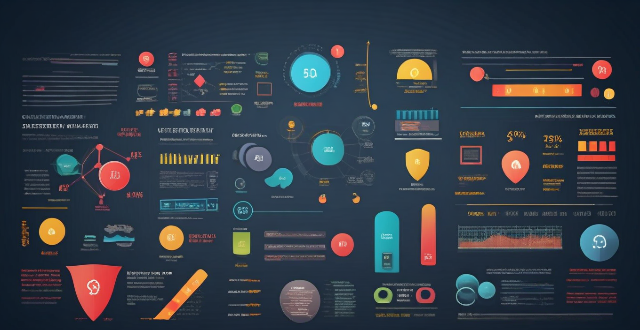
What software tools are commonly used for sports data analysis by coaches and analysts ?
Sports data analysis has become a crucial aspect of modern sports coaching and management. Coaches and analysts use various software tools to collect, analyze, and interpret data to enhance team performance, player development, and tactical planning. Some commonly used software tools for sports data analysis include Prozone, StatsBomb, Opta, Hudl, and SoccerMetrics. These tools offer features such as player performance analysis, event data tracking, in-depth match analysis, video analysis, performance tracking, and visualization tools. Coaches and analysts can choose the ones that best suit their needs and preferences to gain valuable insights into their team's performance and make informed decisions to improve their results.

What role does machine learning play in sports analytics ?
Machine learning is transforming sports analytics by analyzing player performance, team strategies, and game outcomes. It helps evaluate players' strengths and weaknesses, predict future performance, and develop training plans. Machine learning also aids in understanding how different team strategies affect game outcomes and predicting game results based on various factors. As technology advances, we can expect more innovative applications of machine learning in sports.

What are the rules for offside in football ?
The offside rule in football is designed to maintain fairness and prevent cheating. It states that a player cannot receive the ball while being closer to the opponent's goal than the second-to-last opposing player without being penalized. The rule encourages active play and prevents "goal hanging." Players are not penalized for merely being in an offside position but must interfere with play or gain an advantage from it. Exceptions include corner kicks, direct free kicks, throw-ins, goal kicks, kick-offs, and situations where the ball was last touched by an opponent. Adhering to this rule ensures fair play and enhances the integrity of football matches.

What are the challenges faced by Fintech startups ?
Fintech startups face several challenges, includingFintech startups face several challenges, including, competition from established players, including regulatory compliance, security risks, competition from established players, talent acquisition and retention, and scaling and sustainability. These challenges can hinder their growth and success, but many Fintech startups continue to innovate and push the boundaries of what is possible in the world of finance.

How do advanced statistics change the strategy in sports like basketball and football ?
Advanced statistics are revolutionizing basketball and football by providing coaches and players with detailed data to make informed decisions. In basketball, metrics like True Shooting Percentage and Player Efficiency Rating have led to changes in shooting efficiency, pace of play, and defensive strategies. The Golden State Warriors and Houston Rockets are examples of teams leveraging advanced analytics successfully. In football, metrics such as Win Probability Added and Expected Points Added help coaches evaluate player performance and shape strategic decisions. The New England Patriots and Seattle Seahawks are among the teams known for their innovative use of analytics. As technology advances, we can expect more sophisticated strategies in both sports.

How does data analytics improve team performance in sports ?
Data analytics has transformed sports by providing teams with valuable insights into player performance, training programs, game strategy, and predicting outcomes. By leveraging advanced technologies and statistical methods, coaches and players can make more informed decisions that lead to improved performance on the field or court. Key benefits of data analytics in sports include identifying key performance indicators (KPIs), optimizing training programs, enhancing game strategy, evaluating player performance, and predicting outcomes. Overall, data analytics is a powerful tool for teams looking to gain an edge over their competitors and achieve success in their sport.

Can AI assist coaches in developing winning strategies for their teams ?
Artificial Intelligence (AI) can assist coaches in developing winning strategies for their teams by providing advanced data analysis, predictive modeling, virtual reality training, automated scouting, personalized training programs, and real-time decision support. AI algorithms can process vast amounts of data quickly and accurately, providing coaches with valuable insights into their team's performance. This includes analyzing player statistics, game footage, and opponent data to identify strengths, weaknesses, and potential areas for improvement. Using machine learning techniques, AI can predict future outcomes based on historical data and real-time information. This helps coaches make strategic decisions before, during, and after games. AI-driven virtual reality environments can provide immersive training experiences for players, allowing them to practice specific scenarios repeatedly without the physical strain of traditional training methods. AI-powered scouting systems can evaluate potential recruits or opponents more efficiently than human scouts alone, providing coaches with detailed reports on player attributes and suitability for their team's system. AI can tailor training programs to individual players based on their unique needs, ensuring that each member of the team receives targeted instruction designed to maximize their potential. During live games, AI can provide coaches with real-time analytics and suggestions for in-game adjustments, giving them an edge in making quick, informed decisions.
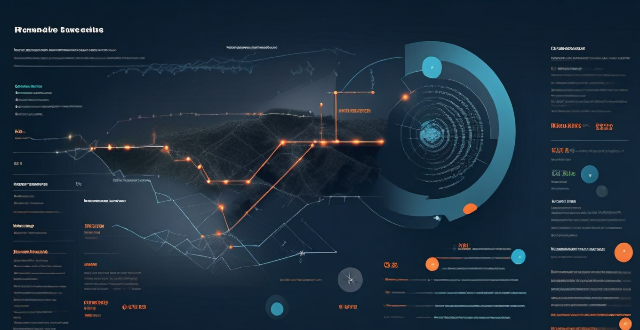
What role does data analytics play in modern sports ?
Data analytics is a crucial tool in modern sports, revolutionizing training, strategy, and performance. It helps track and evaluate performance metrics, prevent injuries, inform game strategies, identify talented athletes, and enhance fan engagement.

What are some examples of AI applications in athletic training ?
AI is transforming athletic training by enhancing performance, reducing injury risks, optimizing training, and identifying talent. Applications include wearable devices for data collection, machine learning for analysis, virtual reality for rehabilitation, personalized training plans, AI-powered coaches, and scouting tools for talent identification.

Can you explain the role of a sports analyst in professional sports teams ?
The role of a sports analyst in professional sports teams is to collect and analyze data, develop strategies, evaluate performance, support player development, communicate effectively, and continuously learn. They are crucial members of any team as their insights help improve the team's performance and make strategic decisions.